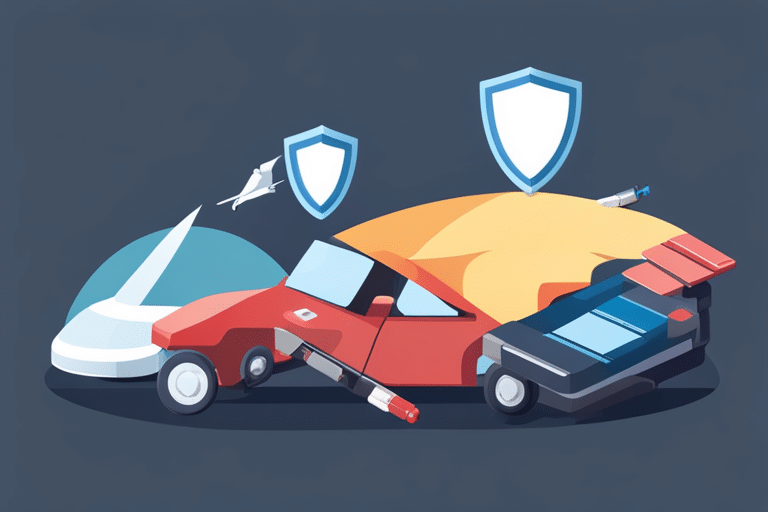Did you know that 6 out of 10 drivers are confused about the differences between comprehensive and collision coverage?
Don’t worry, we’ve got you covered. In this article, we’ll break down these insurance options in a way that even your grandma would understand.
From understanding the key differences to choosing the right coverage for your needs, we’ll guide you through it all.
So sit back, relax, and get ready to become a master of your insurance coverage game.
Key Takeaways
- Comprehensive coverage protects against non-collision incidents such as fire, theft, vandalism, and hailstorms.
- Collision coverage focuses solely on collisions with other vehicles or objects.
- Comprehensive coverage offers broader protection but comes with a higher premium.
- When choosing between comprehensive and collision coverage, factors to consider include the vehicle value, deductible amount, likelihood of accidents, personal budget, and comparing coverage options and quotes.
What Is Comprehensive Coverage
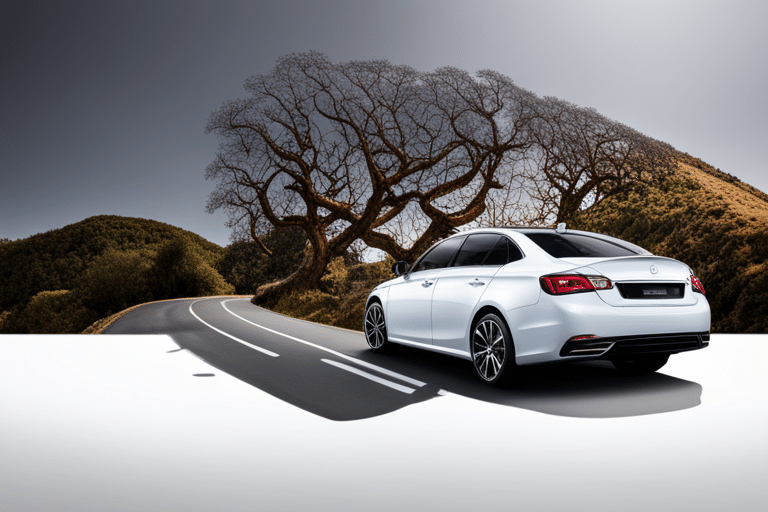
Comprehensive coverage, my friend, is like having a superhero sidekick for your car. It’s there to protect you from all the crazy things that can happen to your beloved vehicle that aren’t caused by collisions. Picture this: you’re driving down the road, minding your own business, when suddenly a tree branch falls out of nowhere and dents your roof. Don’t worry! Comprehensive coverage has got you covered.
Now, let’s talk about what comprehensive coverage actually includes. First of all, it meets all the coverage requirements set by your insurance company. They want to make sure you’re protected against the unexpected too! Secondly, it covers damages caused by events other than collisions. We’re talking about things like fire, theft, vandalism, hailstorms – you name it!
But wait! Before you start celebrating and thinking that comprehensive coverage is the answer to all your car-related problems, let me tell you about some coverage exclusions. Unfortunately, comprehensive coverage doesn’t cover everything under the sun (or moon). It won’t pay for any damages caused by normal wear and tear or mechanical breakdowns. So if your engine decides to take an unscheduled vacation without warning – sorry pal – but that’s on you.
Now that we’ve covered what comprehensive coverage is and isn’t, let’s move on to its trusty sidekick: collision coverage. This dynamic duo will have your back in no time!
What Is Collision Coverage

So, you’ve got yourself a shiny new car and you’re feeling pretty invincible out there on the road.
But let me tell you, accidents happen to the best of us! That’s why it’s important to understand your coverage options when it comes to car accidents and those pesky repair costs.
Coverage for Car Accidents
If you’re involved in a car accident, understanding your coverage options is crucial. Don’t worry, we’ve got you covered! Here are some handy tips to navigate the insurance claim process like a pro:
-
Repair shop recommendations: Your insurer may have preferred repair shops they work with. Check out their list for trusted and reliable options.
-
Get multiple estimates: Don’t settle for the first estimate you receive. Shop around and compare prices to make sure you’re getting the best deal.
-
Document everything: Take pictures of the accident scene and any damages to your vehicle. This will help support your claim later on.
-
Communicate effectively: Stay in touch with your insurance provider throughout the process to stay informed and ensure a smooth resolution.
Now that you know all about handling car accidents, let’s dive into the next topic – repair costs coverage!
Repair Costs Coverage
Repair costs coverage can vary depending on your insurance policy and deductible.
Ah, repair costs, the bane of our existence. It’s like a never-ending cycle of car troubles and hefty bills. But fear not, brave driver! Your insurance policy is here to save the day (and your wallet).
When it comes to covering those pesky repairs, you have options. You can choose comprehensive coverage, which protects against non-collision incidents like theft or vandalism. Or you can go with collision coverage, which kicks in when you collide with another object (bumper cars not included).
So how do these two compare? Well, comprehensive coverage might be a bit pricier upfront, but it covers more situations. Collision coverage is cheaper but focuses solely on collisions (hence the name). It’s like choosing between a fancy buffet or à la carte menu – both will satisfy your hunger for coverage, but one might leave you wanting more dessert (or protection in this case).
Key Differences Between Comprehensive and Collision Coverage

When deciding between comprehensive and collision coverage, it’s important to understand the key differences. Choosing insurance coverage can be as confusing as trying to do a Rubik’s Cube blindfolded (and no, there aren’t any cheat codes for that). But fear not, I’m here to simplify things for you.
So grab your thinking cap and let’s dive into the world of coverage options.
-
Comprehensive Coverage: This is like having a magical shield that protects your car from everything except the kitchen sink (yes, even if someone decides to throw one at your vehicle). It covers damage caused by fire, theft, vandalism, falling objects (assuming they’re not meteorites), and even those pesky critters who mistake your car for their new home.
-
Collision Coverage: Think of this as a suit of armor that shields your car against collisions with other vehicles or objects (okay fine, maybe not against an actual tank). If you accidentally bump into another car or find yourself in a fender bender with a lamppost, collision coverage has got your back.
-
The Cost Factor: When it comes to cost, comprehensive coverage typically carries a higher premium because it offers broader protection. Collision coverage tends to be slightly more affordable but might still leave a dent in your wallet.
-
Insurance Comparison Dance: Before busting out some fancy dance moves on an insurance company’s website, compare quotes for both comprehensive and collision coverage. It’ll help you determine which option fits both your needs and budget.
So there you have it! Now armed with the knowledge of these key differences between comprehensive and collision coverage options, go forth and conquer the insurance world like the masterful adventurer that you are! Remember: understanding is power (and also makes for great party conversation).
Happy exploring!
Factors to Consider When Choosing Between Comprehensive and Collision Coverage

Congratulations! You’ve made it to the exciting world of insurance coverage options. Now that you know the key differences between comprehensive and collision coverage, it’s time to delve deeper into the factors to consider when choosing between the two. Buckle up for this wild ride!
To help you navigate through this insurance maze, I’ve prepared a handy-dandy table with four rows and two columns. Let’s take a look:
| Factors to Consider | Comprehensive Coverage | Collision Coverage |
|---|---|---|
| Cost | Can be higher | Can be lower |
| Deductible | Usually lower | Usually higher |
| Types of Damage | Covers more | Covers less |
| Vehicle Value | Better for newer cars | Better for older cars |
Now that you have a visual representation of your choices, let’s explore these factors in more detail.
First up, cost. Comprehensive coverage can sometimes be pricier than collision coverage due to its wider range of protection. However, don’t let that scare you away just yet! It all depends on your budget and what level of protection you desire.
Next is the deductible. With comprehensive coverage, your deductible is typically lower compared to collision coverage. So if you’re prone to minor mishaps like hail damage or theft, comprehensive might be your best bet.
Speaking of mishaps, let’s talk about types of damage covered. Comprehensive coverage reigns supreme here by protecting you against fire, falling objects (watch out for those acorns!), vandalism, and even animal collisions (looking at you, sneaky squirrels).
Lastly, we have vehicle value. If you’re driving a shiny new car off the lot, comprehensive coverage will give you peace of mind knowing that any unforeseen accidents are covered. On the other hand, if your trusty old clunker has seen better days but still gets the job done, collision coverage might be the more economical choice.
Understanding the Coverage Limits for Comprehensive and Collision Insurance
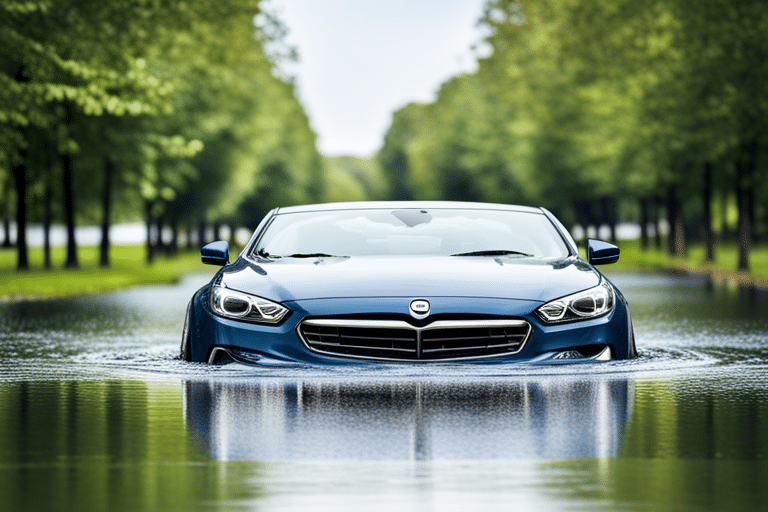
So, you’ve decided to dive into the world of insurance coverage. Exciting stuff!
But before you take the plunge, let’s talk about the differences between comprehensive and collision coverage. Trust me, it’s not as boring as it sounds.
We’ll help you choose the right coverage so that when life throws a curveball (or a fender bender) your way, you’ll be prepared like a seasoned superhero in a shiny cape.
Coverage Differences Explained
To better understand your coverage options, it’s important to know the differences between comprehensive and collision insurance. So, grab your imaginary magnifying glass and let’s dive into this insurance mystery! Here are four key differences that will make you feel like Sherlock Holmes:
-
Coverage: Comprehensive insurance protects you from non-collision incidents like theft, vandalism, or falling objects. Collision insurance, on the other hand, comes to the rescue when you collide with another vehicle or object.
-
Deductibles: With comprehensive coverage, you usually have a lower deductible because it covers a wider range of incidents. Collision coverage often has a higher deductible since collisions can be pricier to fix.
-
Cost: Comprehensive insurance tends to be more expensive than collision insurance due to its broader coverage. It’s like buying a fancy detective hat instead of a regular one.
-
Availability: While both types of coverage are optional, lenders may require collision insurance if you’re financing or leasing your vehicle. They want their investment protected!
Now that you’ve cracked the case on comprehensive vs. collision, choose wisely and stay covered!
Choosing the Right Coverage
So, now that you know the coverage differences between comprehensive and collision insurance, it’s time to choose the right coverage for your needs. And let me tell you, my friend, this is where things get really interesting.
It’s like picking toppings for a pizza or choosing which pet to adopt – you want to make sure you’re maximizing the benefits while also staying within those coverage limits.
You’ve got to think about what kind of driver you are and what risks you face on the road. Are you prone to fender benders or do you live in an area with crazy weather? These factors will help guide your decision-making process.
But fear not! In the next section, we’ll dive into some common scenarios where comprehensive coverage is beneficial. So buckle up and get ready for more insurance excitement!
Common Scenarios Where Comprehensive Coverage Is Beneficial
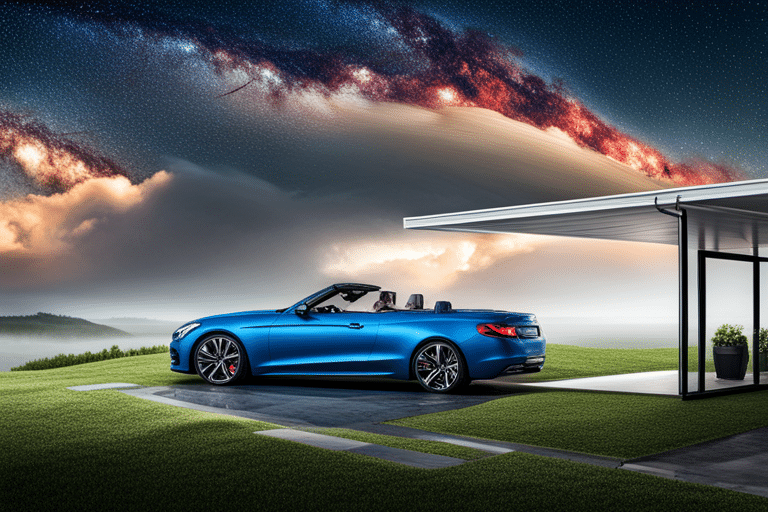
If you live in an area prone to severe weather, comprehensive coverage can be beneficial for protecting your vehicle from hail damage.
But wait, there’s more! Comprehensive coverage isn’t just for hailstorms; it can come in handy in a variety of situations.
So let’s dive into some common scenarios where comprehensive coverage proves its worth:
-
Freaky Falling Objects: Picture this: you’re driving along, minding your own business when suddenly a flying saucer crashes onto your car. Okay, maybe not a flying saucer, but what about a tree branch? Or even worse, a rogue shopping cart launched by mischievous gremlins? With comprehensive coverage, you can rest easy knowing that these unexpected mishaps are covered.
-
Animal Encounters Gone Wrong: Animals are cute and all until they decide to use your car as their personal jungle gym or crash into it like they’ve been watching too many action movies. Whether it’s an overly enthusiastic deer or an adrenaline-fueled squirrel with no regard for traffic rules, comprehensive coverage has got you covered.
-
Natural Disasters Unleashed: Mother Nature has her moments of fury – hurricanes, tornadoes, and earthquakes galore! When she decides to throw a tantrum and unleash her wrath upon your beloved ride, comprehensive coverage steps up to shield you from the financial fallout.
-
Theft and Vandalism Shenanigans: Unfortunately, not everyone appreciates the beauty of your four-wheeled companion. Some people have sticky fingers or enjoy playing ‘let’s see how many dents I can leave on this car.’ Fear not! Comprehensive coverage will help repair the damage caused by these miscreants.
Common Scenarios Where Collision Coverage Is Beneficial
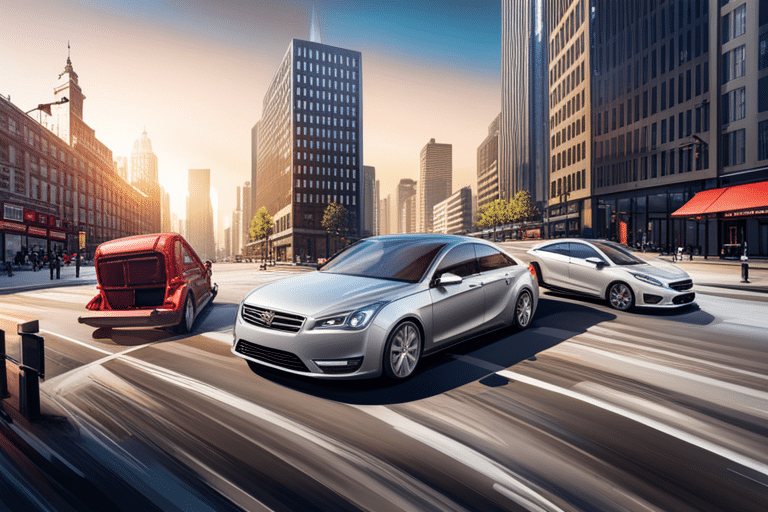
So you’re a bit of a klutz behind the wheel, huh? Well, don’t worry, we’ve all been there.
Today, let’s talk about those oh-so-fun scenarios where collision coverage really comes in handy. Rear-end accidents, parking lot collisions, and even hitting a stationary object – these are the moments when you’ll be glad you have that extra protection.
Rear-End Accidents
Rear-end accidents can result in significant damage to both vehicles involved. But fear not, my friend! Your insurance claims process is here to save the day.
Here are four fascinating facts about rear-end accidents and insurance claims that will make your head spin (in a good way, of course):
-
Domino Effect: Rear-end collisions often lead to a chain reaction of cars bumping into each other like dominoes. It’s like a real-life game of bumper cars!
-
Whiplash Wonderland: The sudden impact from a rear-end accident can give you quite the neck workout. Who needs yoga when you have whiplash?
-
Bumper Beauties: Did you know that rear bumpers are designed to absorb the impact and protect your vehicle? They’re like your car’s very own superhero cape.
-
Insurance Magic: Luckily, most insurance policies cover rear-end accidents because they happen more frequently than clumsy fender benders.
Parking Lot Collisions
Parking lot collisions can be frustrating and costly, especially when there’s a lack of available evidence to determine fault. It’s like a game of parking lot roulette, where you never know who will bump into you next. But fear not, dear master of the parking lot! Understanding insurance claims and parking lot rules can help navigate this chaotic world.
To make things easier for you, here’s a handy table summarizing some key parking lot rules:
| Rule | Description |
|---|---|
| No Double Parking | Don’t hog two spots with your fancy ride. It’s just not cool. |
| Mind the Lines | Stay within your designated spot – think inside the box! |
| Yield to Pedestrians | They may have right of way, but they also have slow walking speeds. Be patient! |
| Avoid Speeding | Save those racecar dreams for another time and place – like Mario Kart! |
Hitting a Stationary Object
When you accidentally hit a stationary object, like a light pole or a shopping cart, it can be frustrating and embarrassing. We’ve all been there, my friend. But fear not! Here are some discussion ideas to help you avoid future collisions and navigate the legal implications:
-
Embrace defensive driving: Be on high alert for those sneaky lampposts waiting to jump out at you.
-
Practice spatial awareness: Pretend you’re playing a real-life game of Tetris and maneuver your vehicle accordingly.
-
Avoid distractions: Put down that sandwich or lipstick (or both) and keep your eyes on the road!
-
Know your blind spots: Those pesky objects have a knack for hiding in plain sight, so make sure to check all your mirrors.
How Deductibles Work for Comprehensive and Collision Coverage

Understanding how deductibles work for comprehensive and collision coverage is essential when choosing the right insurance policy. But don’t worry, we’re here to make it as painless as possible! Let’s dive into the world of deductibles and discover the ins and outs, shall we?
First things first, let’s break it down with a handy-dandy table:
| Comprehensive Deductible | Collision Deductible |
|---|---|
| The amount you pay out of pocket for comprehensive claims. | The amount you pay out of pocket for collision claims. |
| Usually a fixed dollar amount set by your insurance company. | Again, a fixed dollar amount set by your insurance company. |
| Can vary depending on factors like your driving history or location. | Can also vary based on factors like your vehicle’s value or accident history. |
Now that wasn’t too bad, was it? These deductibles may seem straightforward, but there are some sneaky factors that can affect them.
When it comes to understanding deductibles, keep in mind that they can be influenced by factors such as your driving record (speed demon or slowpoke?), where you live (city slicker or country dweller?), and even the type of vehicle you own (luxury car enthusiast or minivan maestro?). So make sure to consider these elements when selecting your deductible amounts.
And now that we’ve tackled the mysteries of deductibles, let’s move on to exploring how comprehensive and collision coverage affect those infamous insurance premiums. Hang tight!
Sentence transition: Now that you’re an expert on deductibles, let’s dive into how comprehensive and collision coverage affect your insurance premiums.
How Comprehensive and Collision Coverage Affect Your Insurance Premiums
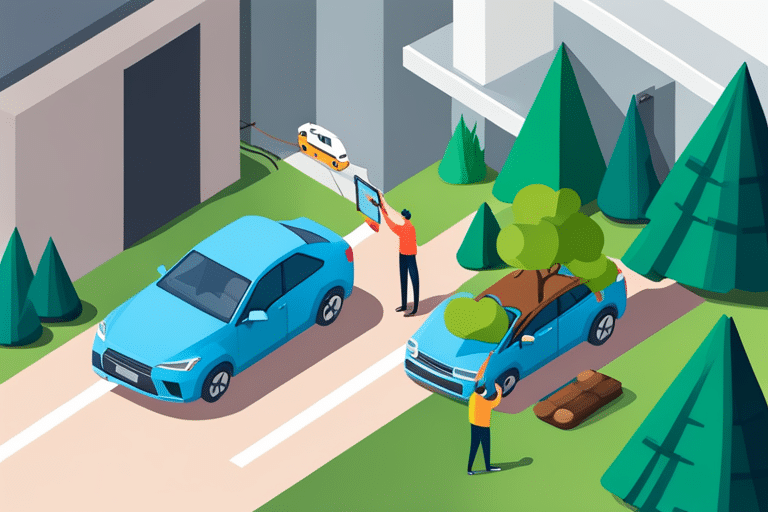
Now that you’ve got a handle on deductibles, let’s explore how comprehensive and collision coverage impact your insurance premiums. Brace yourself for a whimsical journey through the wacky world of insurance rates!
Here are four factors that can influence how these coverages affect your premiums:
-
The value of your vehicle: Just like a fancy car with all the bells and whistles will cost more to insure, comprehensive and collision coverage for expensive vehicles often come with higher premiums. It’s like buying the deluxe package at an amusement park – you get more thrills, but it comes at a price!
-
Your driving history: If you’re known for being a daredevil on the roads, insurance companies might see you as a high-risk customer. This means they’ll likely charge higher premiums for comprehensive and collision coverage because they expect more claims from someone who loves living life in the fast lane.
-
Your location: Living in an area prone to accidents or thefts? Insurance companies take note! They consider where you live when calculating your premiums for comprehensive and collision coverage. It’s sort of like ordering pizza – if you live in Pizza Paradise, where pizzas mysteriously vanish into thin air before they even reach their destination, well…you might have to pay extra.
-
Your deductible: Remember those deductibles we talked about earlier? Well, here’s where they come into play again! Choosing a higher deductible can lower your premium costs for comprehensive and collision coverage. It’s like saying ‘I’m willing to risk eating bananas instead of steak tonight so I can save some cash!’
Tips for Maximizing Your Coverage Benefits With Comprehensive and Collision Insurance
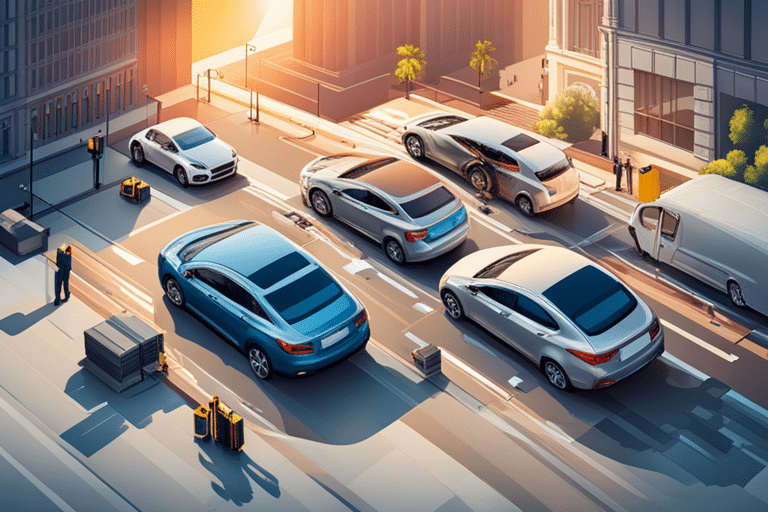
To make the most of your coverage benefits with comprehensive and collision insurance, it’s important to consider these helpful tips.
Think of it like this: you’re in a game where the goal is to maximize your benefits and understand your options. And just like any game, you need some strategies up your sleeve.
First things first, let’s talk about maximizing benefits. When it comes to comprehensive and collision insurance, one key tip is to know what’s covered. Comprehensive insurance takes care of things like theft, vandalism, and natural disasters (sorry, it won’t cover that rogue squirrel who decided to redecorate your car). Collision insurance steps in when you have an accident with another vehicle or object (like that pesky lamppost that seemed to appear out of nowhere).
Now that we’ve got the basics down, let’s move on to understanding options. It’s essential to review different deductibles available for comprehensive and collision coverage. A deductible is like a magic number—the amount you pay before your insurance kicks in. So choose wisely! A higher deductible can lower your premium but means more money out of pocket if something happens.
Another option worth considering is adding gap coverage if you’re leasing or financing a car. This nifty feature covers the difference between what you owe on the car and its actual value—just in case something unexpected happens (like aliens abducting your vehicle).
Frequently Asked Questions
What Are the Main Benefits of Having Both Comprehensive and Collision Coverage?
Having both comprehensive and collision coverage offers you the benefits of protecting your car from a wide range of risks. It’s like having a superhero team defending your vehicle against accidents, theft, vandalism, and natural disasters. So, it’s definitely worth considering!
Are There Any Situations Where Comprehensive Coverage Alone Would Be Sufficient?
Sometimes, you might think comprehensive coverage alone is enough. Like when you’re parked and a tree falls on your car. But remember, it won’t cover accidents or collisions with other cars!
How Does the Deductible for Comprehensive Coverage Compare to the Deductible for Collision Coverage?
When it comes to comparing deductibles for comprehensive and collision coverage, there are a few factors at play. But here’s the fun part: the deductible for comprehensive coverage is usually lower than collision!
Can I Add Comprehensive and Collision Coverage to My Policy at Any Time, or Do I Have to Do It When I First Purchase My Insurance?
Sure, you can totally add comprehensive and collision coverage to your policy later on. No need to stress about getting it when you first buy insurance. You’ve got options, my friend!
Are There Any Types of Damage or Incidents That Are Not Covered by Either Comprehensive or Collision Insurance?
You’ll be surprised to learn that even comprehensive and collision insurance have their limits. They won’t cover damage caused by natural disasters or your intentional acts. So, no summoning hurricanes or crashing into walls, okay?
Conclusion
Congratulations! You’ve reached the end of this whimsical journey through comprehensive and collision coverage.
Now that you’re armed with knowledge about these insurance options, you can navigate the roads of life with confidence (and a touch of pizzazz).
Remember, comprehensive coverage is like a magical shield protecting your vehicle from unexpected mishaps, while collision coverage is like a trusty sidekick ready to swoop in when accidents happen.
So go forth, my friend, and choose wisely – because when it comes to insurance, the world is your oyster!

